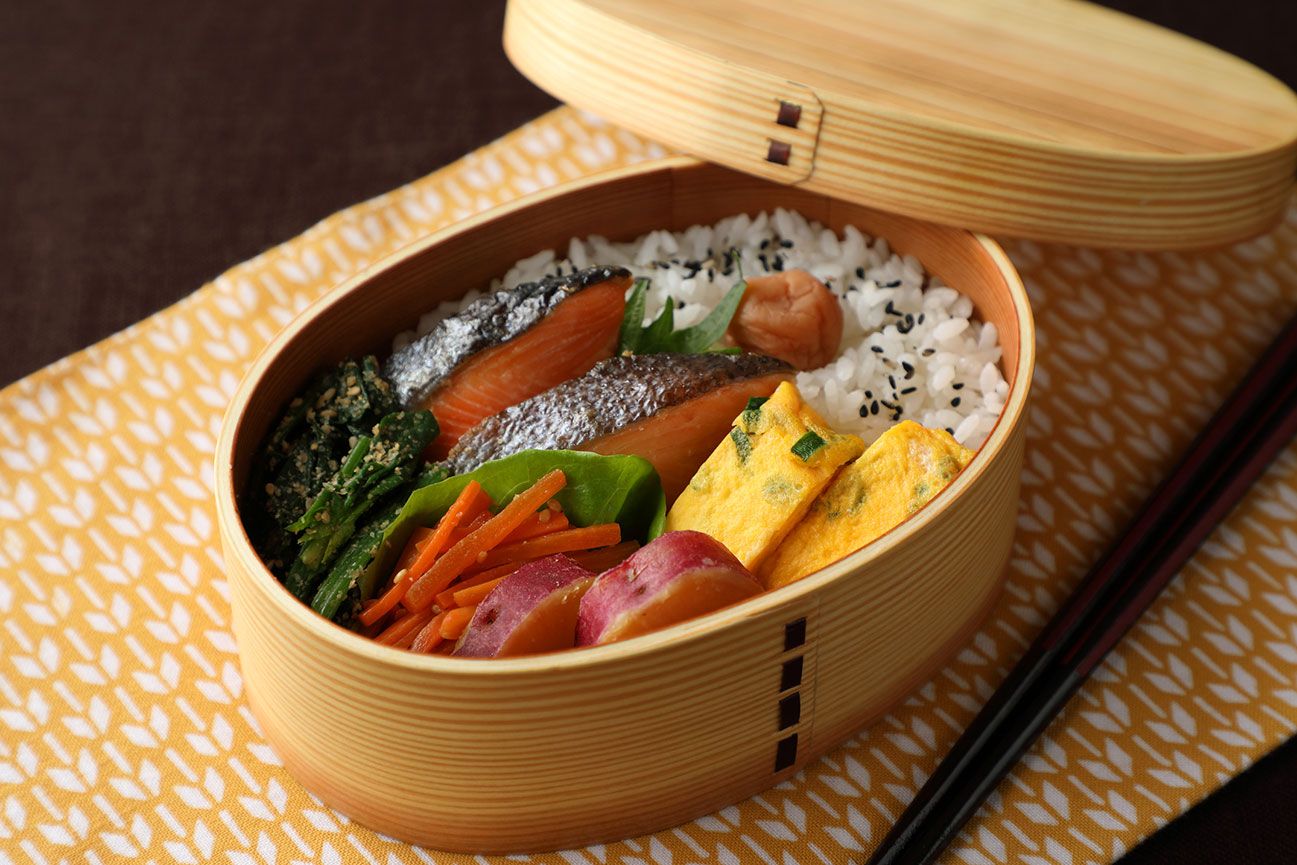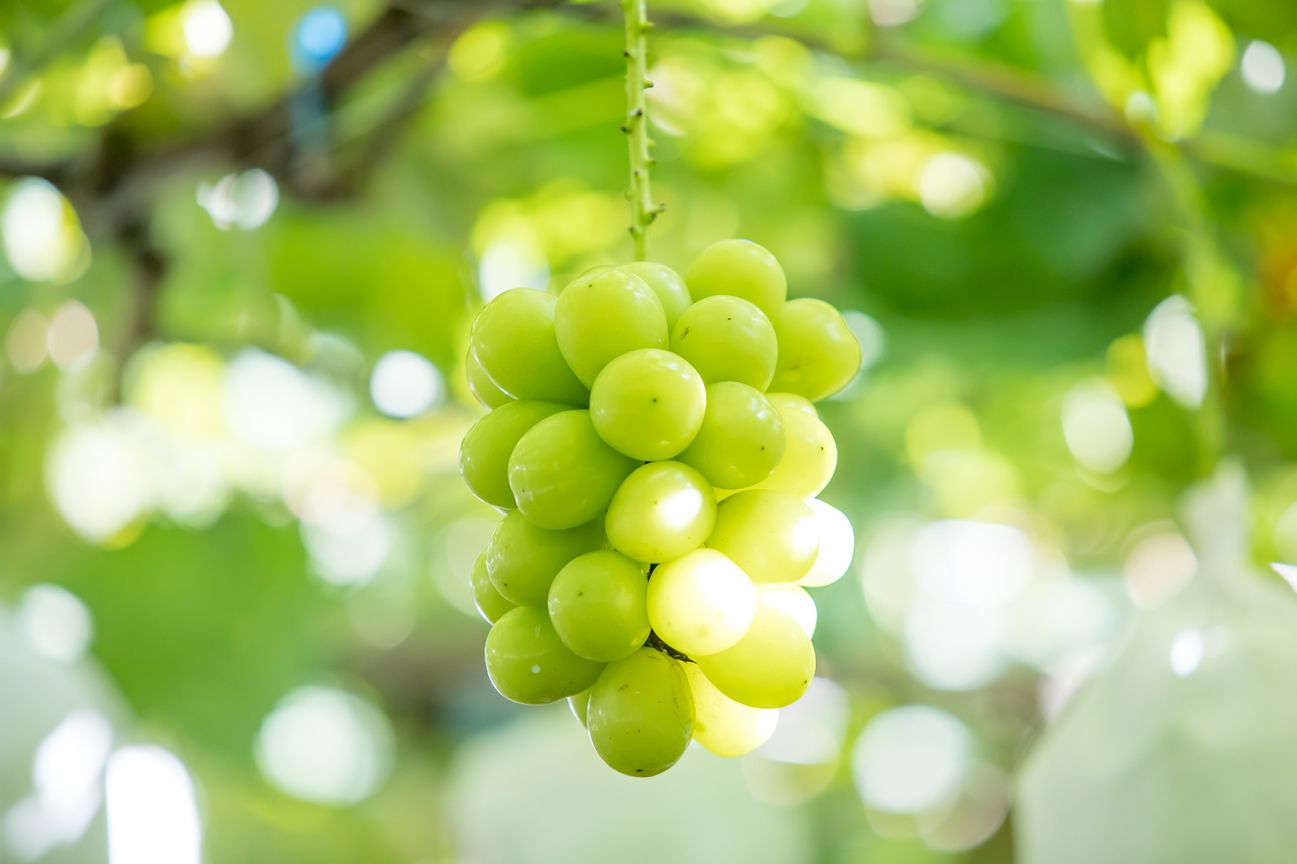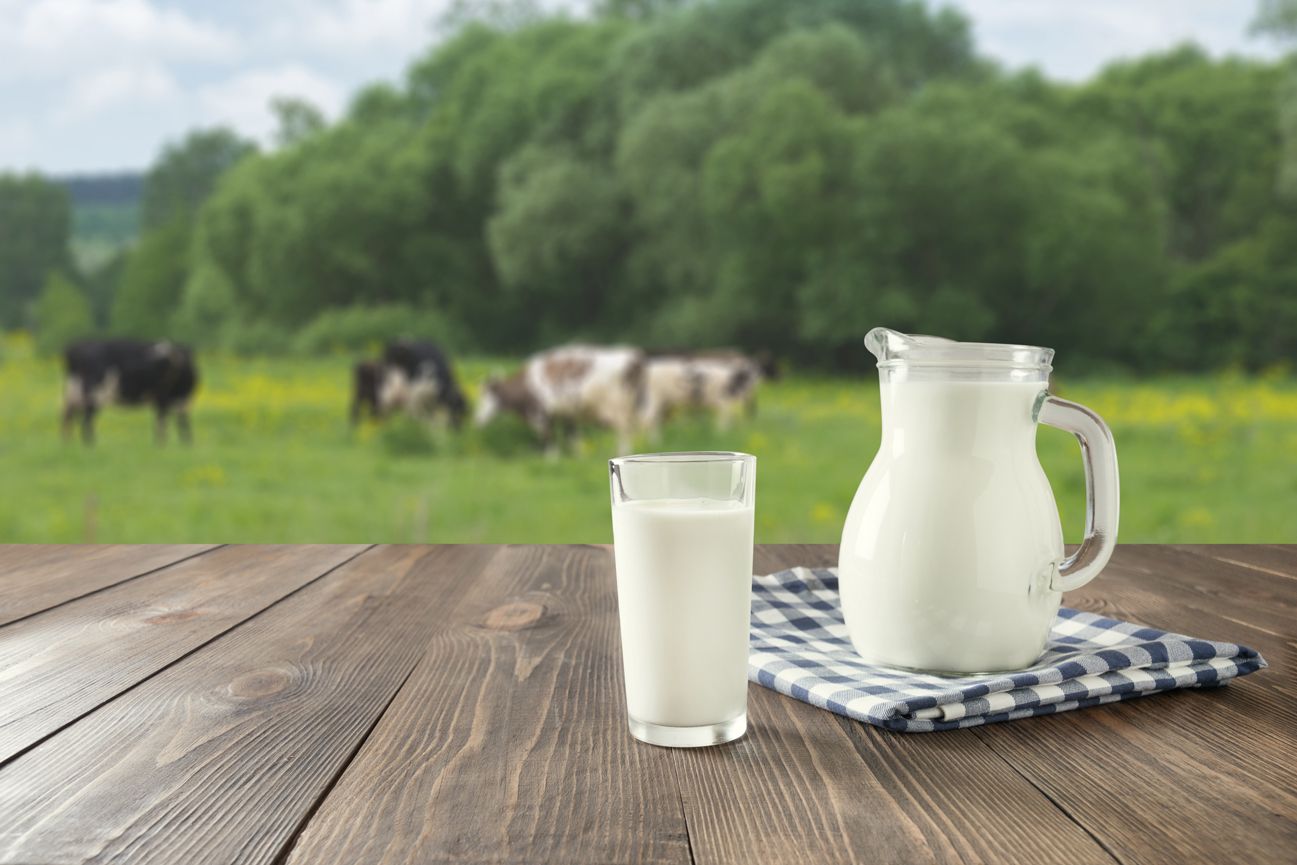
Milk with world-class flavor, cultivated in the vast natural landscape of Hokkaido Prefecture
Hokkaido Prefecture has a reputation for being the top producer of milk in Japan. The prefecture is located in the northernmost portion of the Japanese archipelago, with regional characteristics - such as vast areas of land suitable for pastures and grass fields, and a cool climate - that have long driven the development of dairy farming in the area. But what exactly makes milk from Hokkaido so delicious?
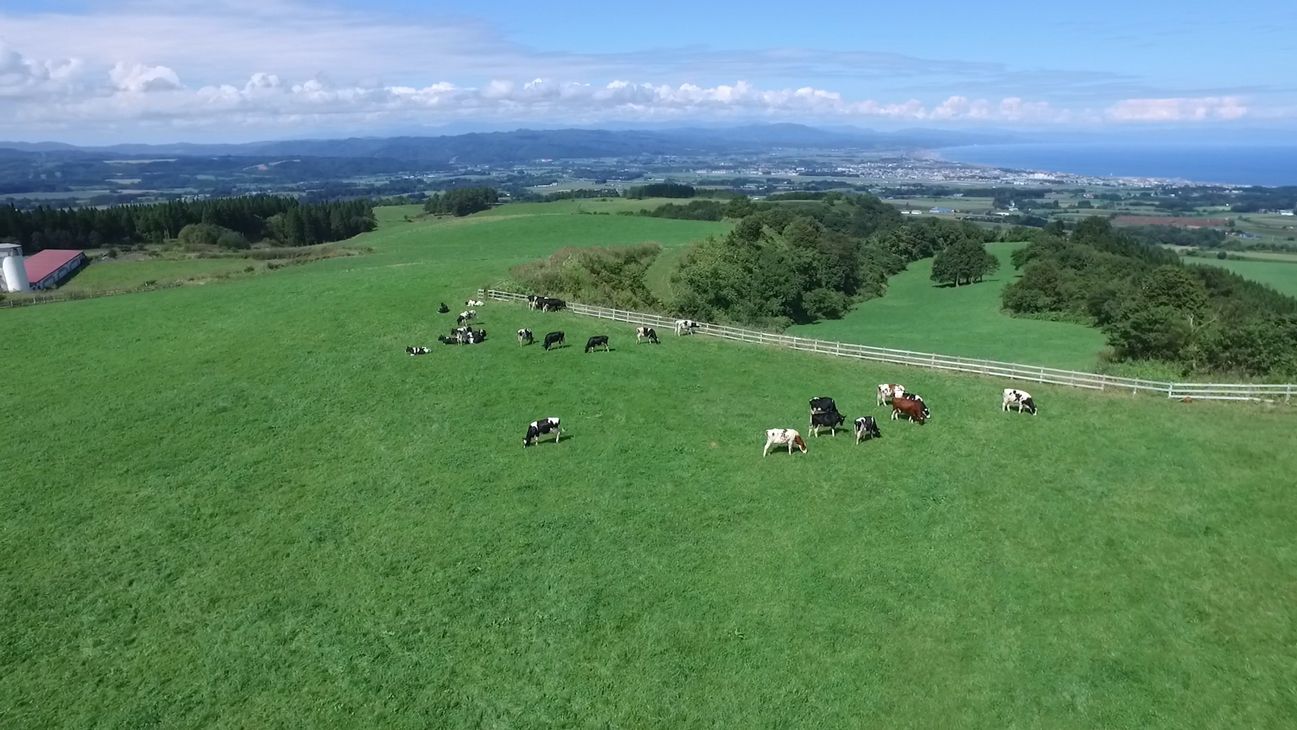
Hokkaido’s climate and natural landscape is ideal for cows. As such, dairy farming is practiced in all areas of the prefecture.
55.9% of all raw milk produced in Japan is produced in Hokkaido Prefecture (as of 2020). 810,699 dairy cows are kept within the prefecture, comprising 61.3% of all dairy cows in the country. Dairy products that are produced in Hokkaido, with all of its natural blessings, are all extraordinarily delicious. The deliciousness of these products is the culmination of efforts by the many different people involved in producing the raw milk.
“I get the sense that Japanese milk - including, of course, milk produced in Hokkaido - is valued by consumers for their safety and reliability. Freshly harvested raw milk is at a temperature of about 38-39°C, about the same as the body temperature of the cow. Raw milk can’t be kept at this temperature for very long, or else there will be bacterial growth. The fresh raw milk is thus transferred to a bulk cooler (tank for storing raw milk) to prevent it from coming into contact with the outside air, and cooled to at least 4°C. A traceability system is used to keep the milk at a temperature of at or below 4°C throughout its journey. This preserves the quality of the milk even over long distances, and allows us to deliver it to consumers with all of its flavors intact.”
So says Mr. Masaya Hayashi of the Public Relations and General Affairs Department, Corporate Planning Division of the HOKUREN Federation of Agricultural Cooperatives (hereafter “HOKUREN”). HOKUREN is a federation made up of agricultural cooperatives. They work to collect, process, distribute, and sell agricultural and livestock products produced in Hokkaido, and provide producers with the resources and production technologies they need, such as machinery, equipment, fertilizer, and feed, as well as information about these. Their role here is to collect the raw milk produced in Hokkaido, and sell it to dairy manufacturers.
“Almost all dairy farmers in Hokkaido raise their dairy cows on self-supplied feed. They’re able to grow the grass they need because of the vast amounts of land available in Hokkaido. I feel that many of the dairy farmers in the area are highly conscious of the need for proper safety and reliability, and are very thorough in managing the sanitation of their barns,” says Mr. Kyohei Hotta of the Dairy Products and Milk Department at HOKUREN.
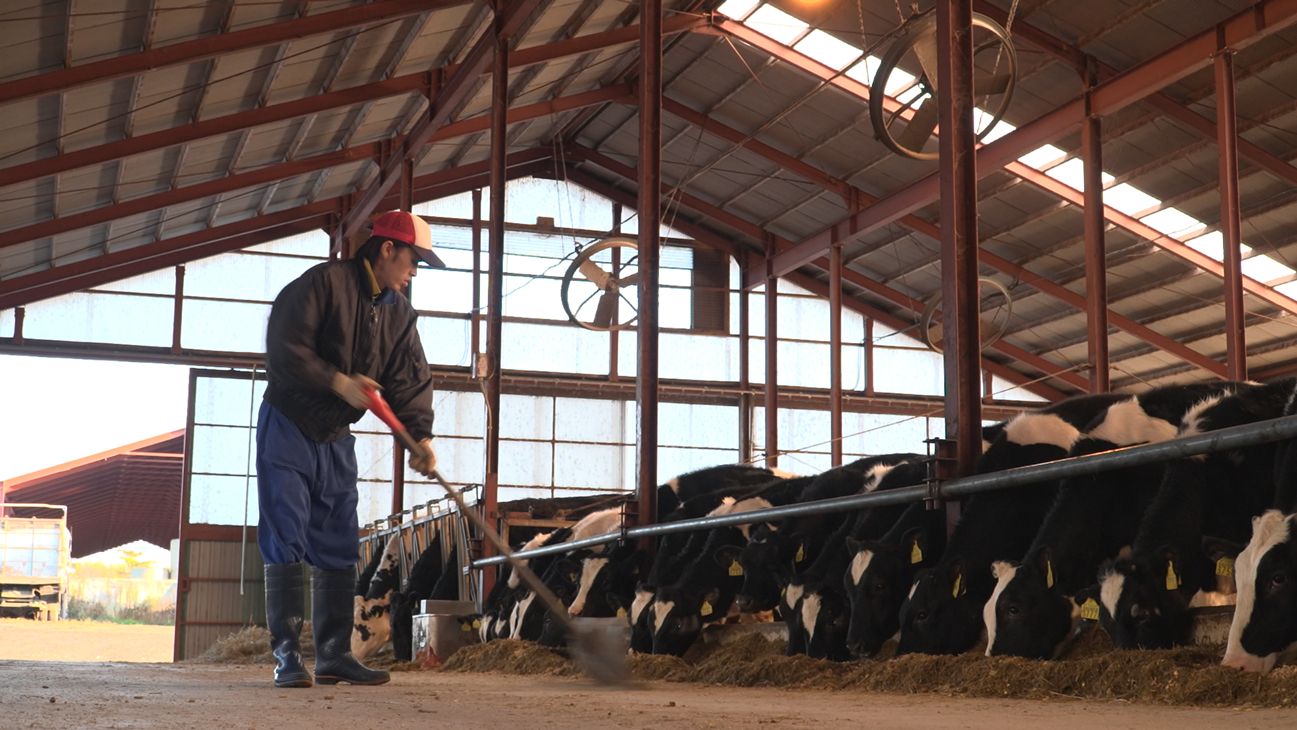
Barns are cleaned carefully on an everyday basis so that the cows can live comfortably and stress-free.
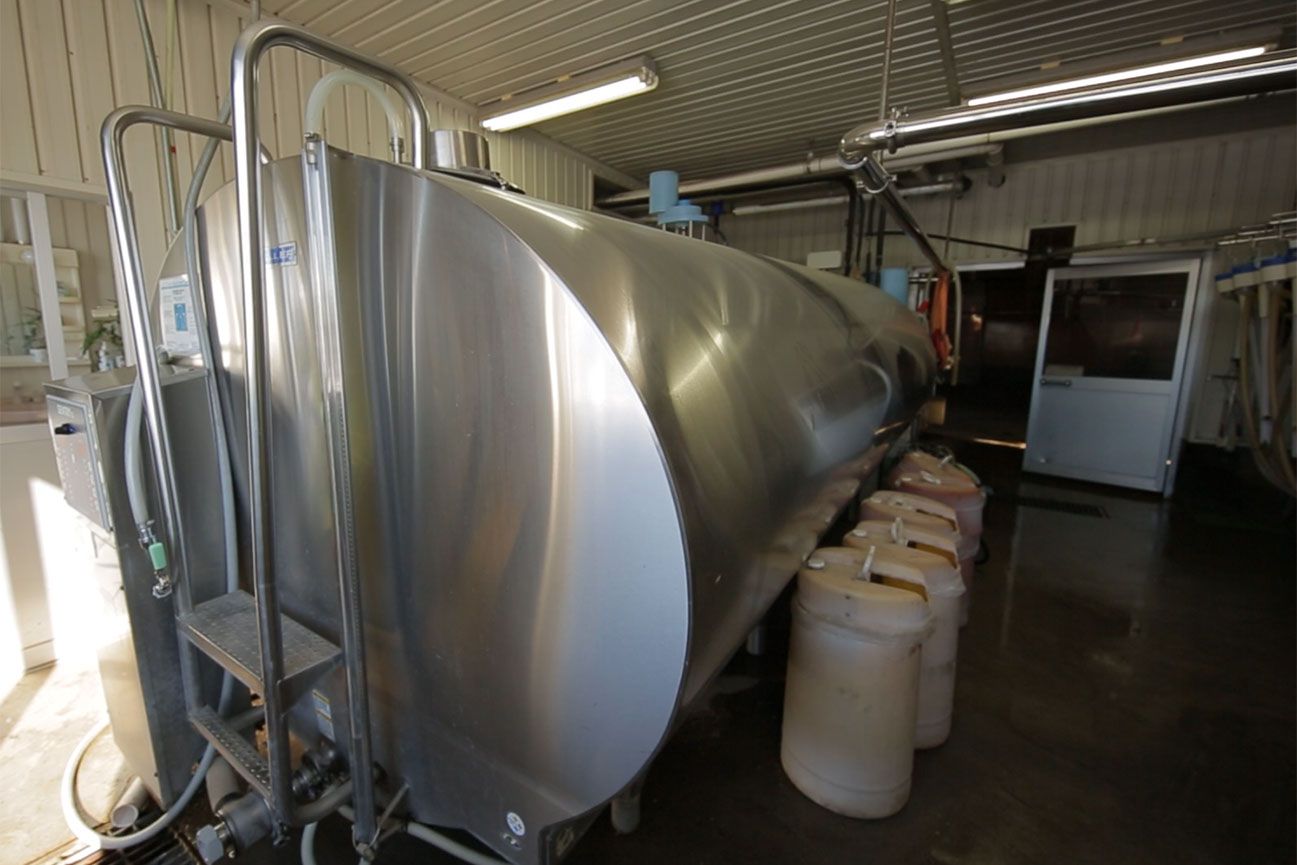
The raw milk harvested in the pastures are collected into what is called a bulk cooler - a tank for cooling and storage - where it is cooled down to at or below 4°C.

The temperature management system is automated, with the temperature at any point in the process, from collection to shipping, available for tracing.
Indeed, Japanese milk is valued so highly both in Japan and overseas for its high quality and reliability.
“A lot of the technologies we use are the same as in the West - for instance, we’ve been implementing robotic milking as well. But it’s our understanding that the quality of Hokkaido milk sanitation-wise is one of the best in the world, and we’re quite proud of that*,” says Mr. Takahiro Watanabe of the Milk Marketing Department, Dairy Division of HOKUREN.
*Hokkaido Dairy Milk Recording & Testing Association
Reference: https://www.milkland-hokkaido.com/ippai/anzen.html
Dairy products from Hokkaido have already garnered considerable interest amongst consumers interested in quality food, even overseas.
“The products we ship to Southeast Asia and East Asia, which are relatively close to Japan, include long-life (LL) milk that can be stored at room temperature, and chilled milk. They’re sold at higher prices than in Japan, and are more expensive than milk produced in other countries, but are available in local retail supermarkets,” says Mr. Hotta.

The quality of raw milk is highly dependent on the feed the cows eat.
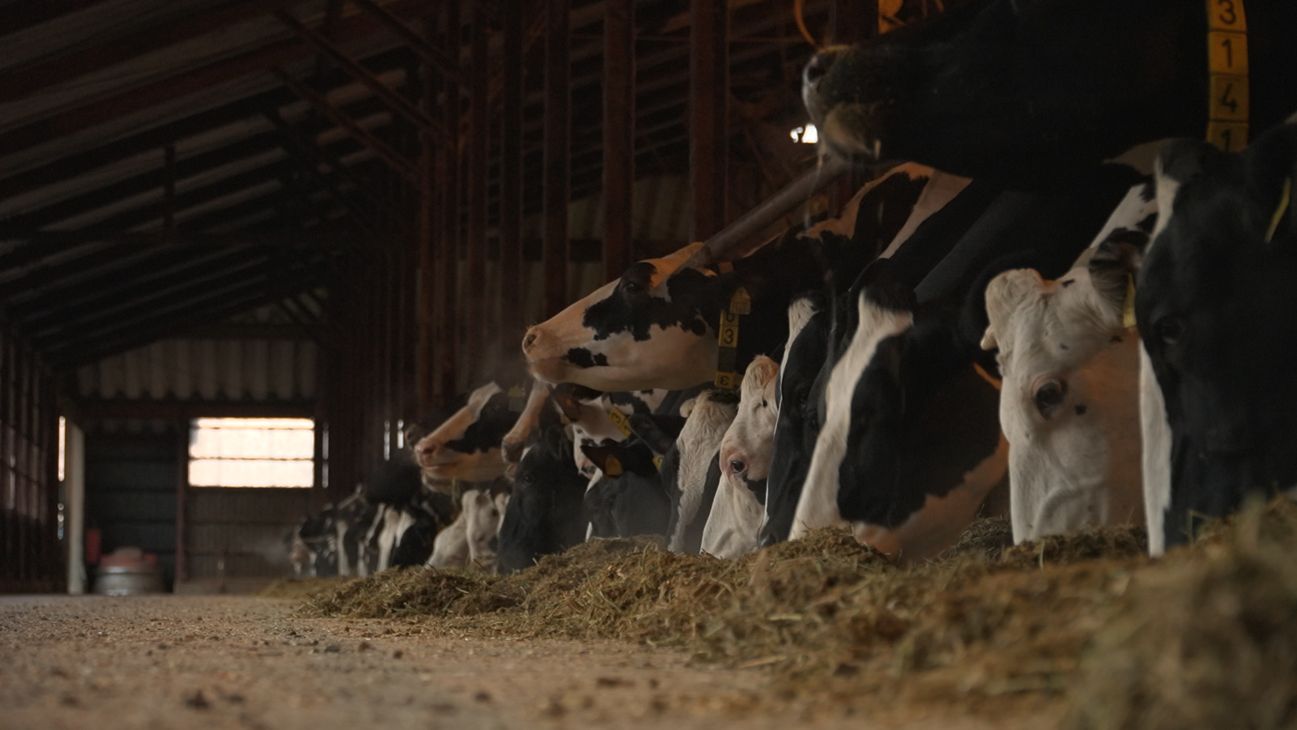
Another advantage of being a dairy farmer in Hokkaido is being able to grow grass on the vast swathes of land the area has to offer, and thus provide the cows with high-quality feed.
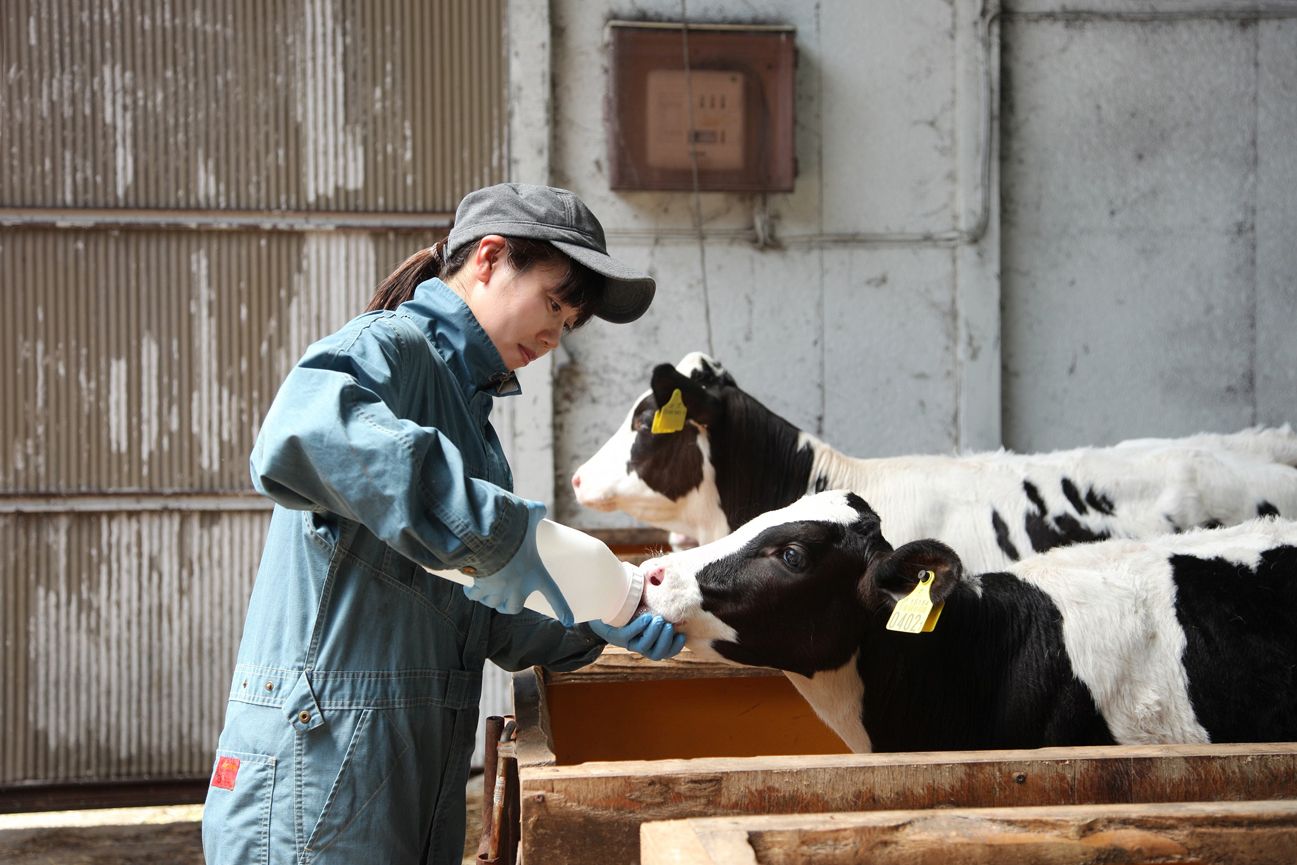
Feeding milk to a calf. The careful, meticulous work that goes into caring for these cows is reflected in the flavor of the milk. Photo provided by: aff (July 2019 edition), PR magazine by the Ministry of Agriculture, Forestry and Fisheries
But what do people overseas think of Hokkaido milk specifically, even within the category of Japanese milk?
“We get locals saying they can trust the quality of the milk and that it’s delicious, or that they realized they liked it when they bought the milk and drank it while on vacation in Japan. An importer also once told us that the word ‘Hokkaido’ has become a powerful word synonymous with great flavor and high quality,” says Mr. Hayashi.
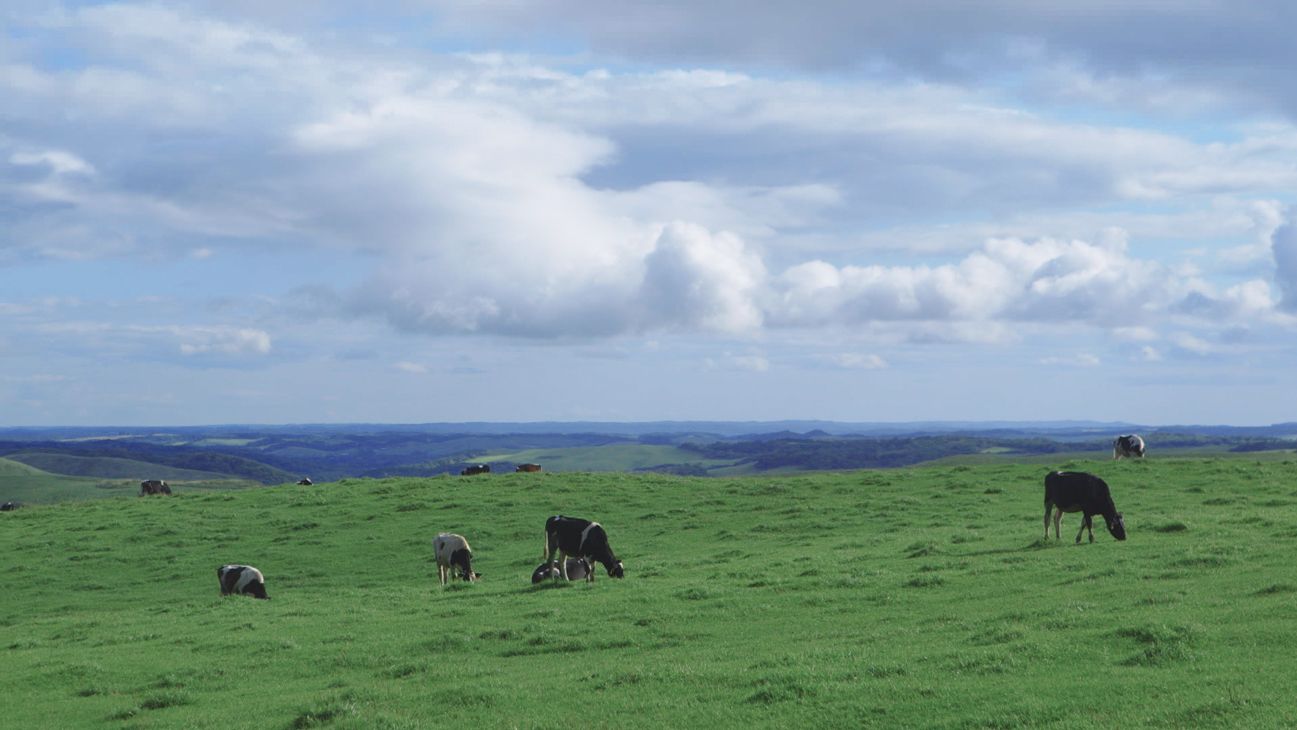
The Hokkaido landscape, with its green pastures and expansive blue skies, provides a comfortable environment for dairy cows, and is known even overseas for producing delicious milk.
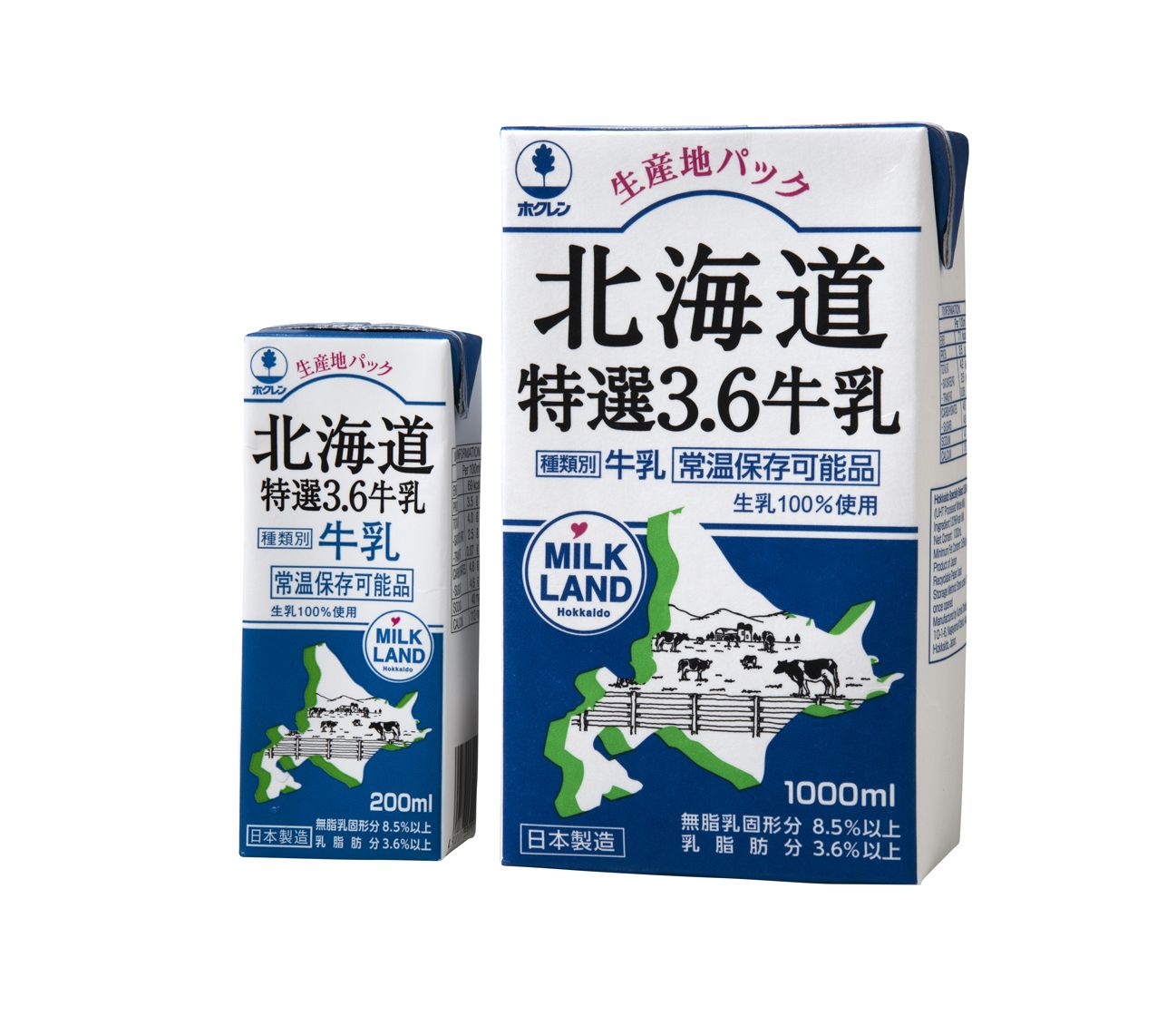
LL milk by Yotsuba Milk Products, exported by HOKUREN.
We asked dairy farmer Mr. Hiroshi Endo, deputy chairman of the Hokkaido Agricultural Association Youth Division Secretariat, about the mindset of the producers themselves.
“We’re very proud that Hokkaido milk is some of the highest-quality in the world. I think this comes from the fact that each of us producers are concerned, sincerely, about the value of life. We handle living beings in this profession. But that’s also what makes dairy farming such difficult work. Cows are referred to as an ‘economic animal,’ and we harvest milk from them to distribute on the market. But this whole time, I’ve never once forgotten that we as human beings are collecting milk that originally was intended for the mother cow to give her calf. In Japan, we have a wonderful phrase, ‘Itadakimasu’ (an everyday phrase used before eating a meal to express gratitude for those who made the food, for the food itself, etc.). This culture of expressing gratitude for the blessings of nature has been something that’s been passed down through the course of Japan’s history. It’s true that sometimes, the balance between supply and demand can be disrupted due to unforeseen circumstances. But I’ve felt for myself the importance of continuing production, even in such cases, to ensure access to raw milk and dairy products that are safe and reliable, and to protect our world-class raw milk.”
MILKLAND HOKKAIDO is a business that was set up in 2006, with the goal of expanding the consumption of Hokkaido milk.
It is an example of a business in which Hokkaido farmers have worked together to establish capital. Their catchphrase is, “A glass of milk, the pride of Hokkaido.”
“A glass of milk, the pride of Hokkaido,” produced through the dedicated efforts not only of Hokkaido dairy farmers, but everyone involved in the production of Japanese milk and dairy products. Take a single sip, and you’ll find yourself pining for more.
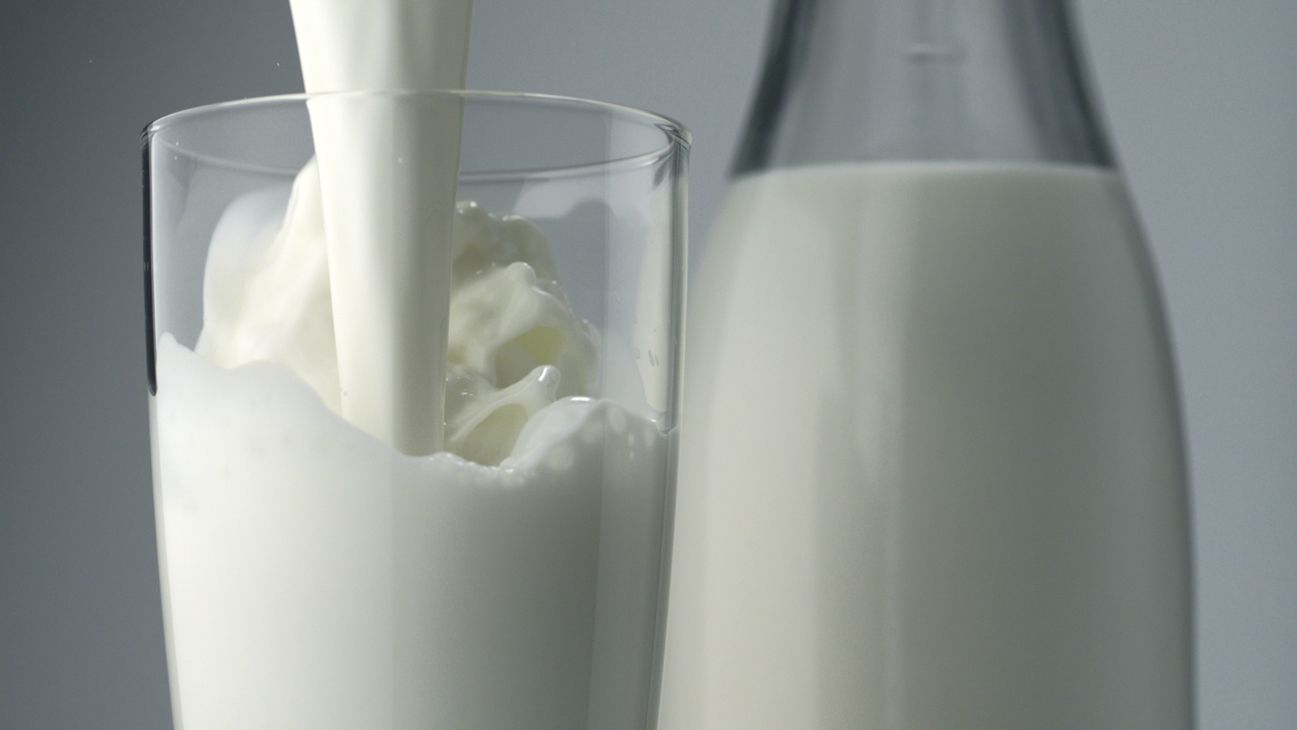
Drink it chilled as is, or put it into coffees, smoothies, or as an ingredient in stews, soups, and desserts. Japanese milk will bring out the flavor of all of these in exquisite fashion.
Reference: Japan Livestock Products Export Promotion Council Secretariat
Photo provided by: HOKUREN
Text: Tomomi Aoyama (Courageous Navy)
Hokkaido Prefecture
HOKUREN Federation of Agricultural Cooperatives
An organization established by Japan Agricultural Cooperatives (JA) in Hokkaido Prefecture in order to handle JA financial affairs. The organization provides support to producers by supporting their farming activities, while also providing a steady supply of Hokkaido agricultural and livestock products to consumers. They also make efforts to cultivate new areas of demand by building up the Hokkaido brand, engaging in PR activities, and more.
https://www.hokuren.or.jp/





